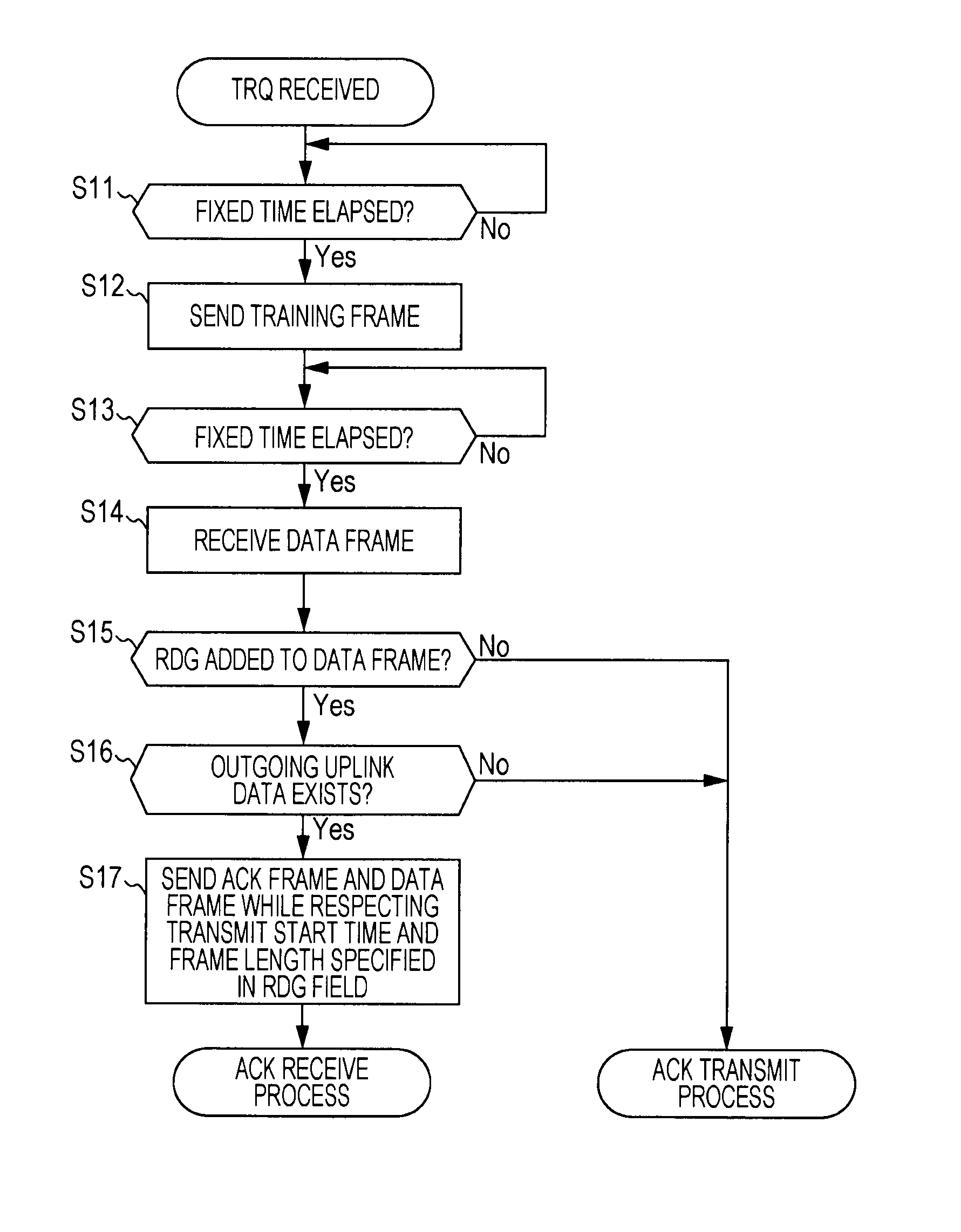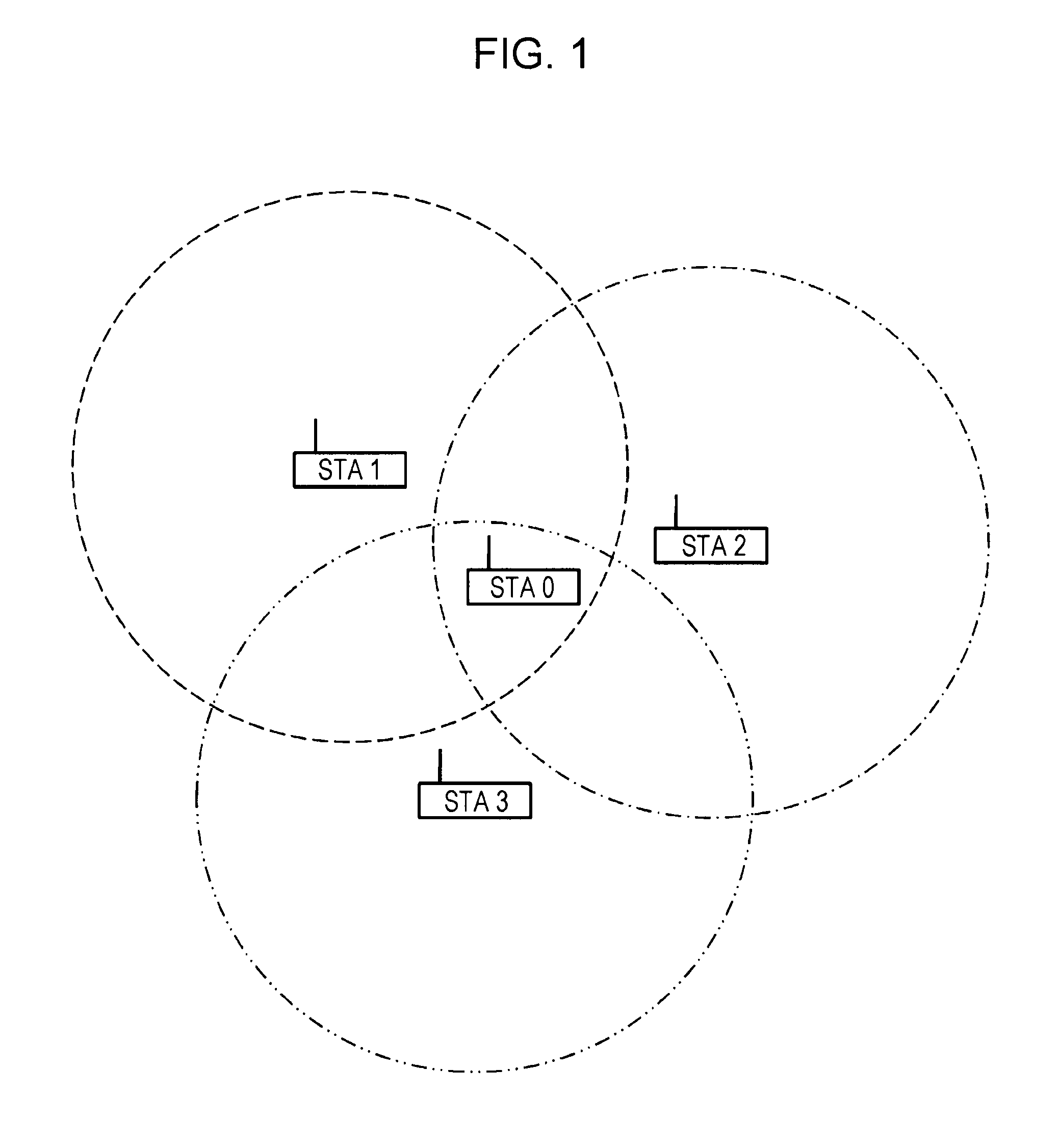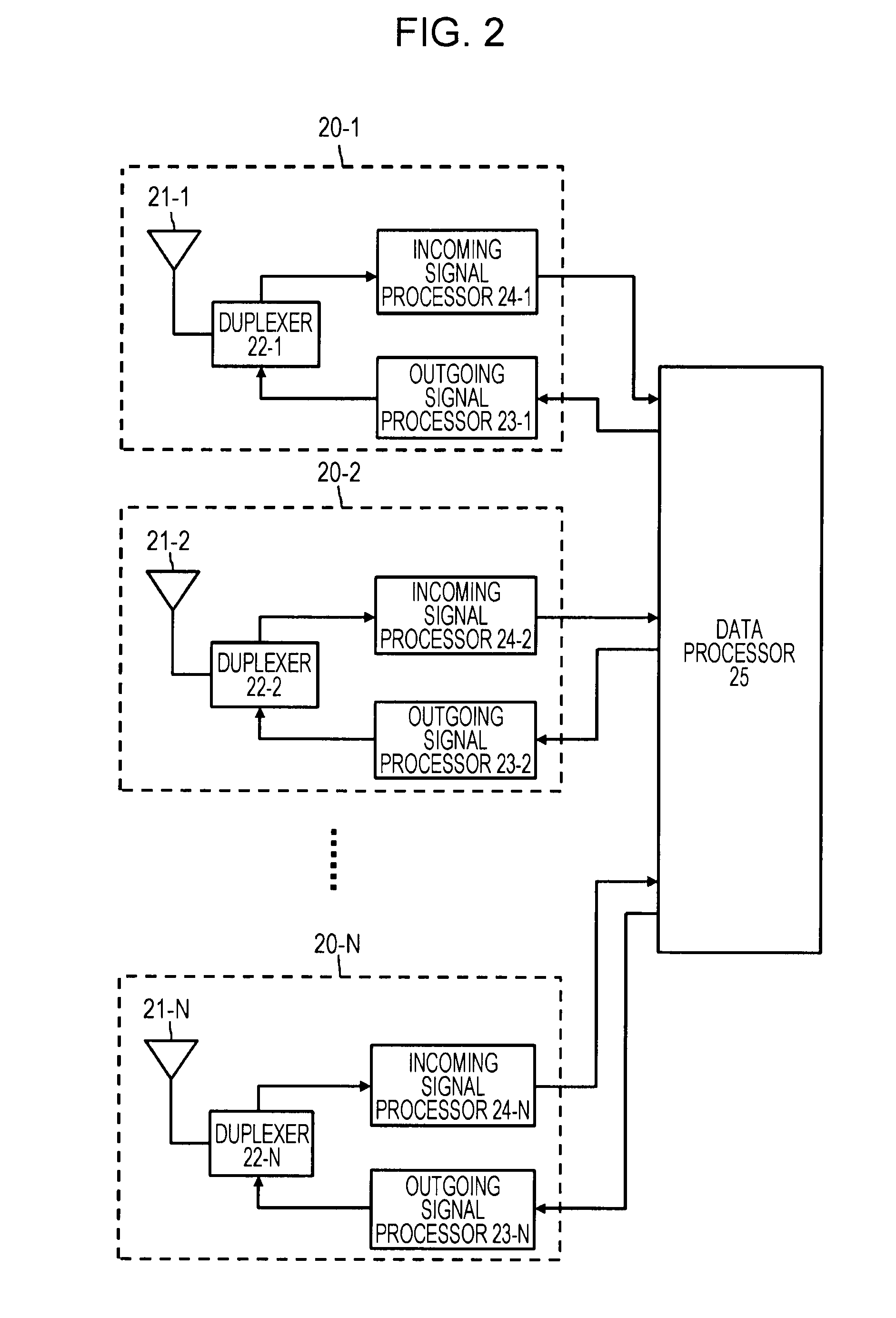Communication apparatus and method, computer program, and communication system
a communication apparatus and computer program technology, applied in the field of communication apparatus and methods, computer programs, and communication systems, can solve problems such as inability to control automatic gain, and inability to maintain constant distribution in frames, so as to avoid destabilization of agc operation, increase the amount of multiplexing in frames being received, and communicate optimally
- Summary
- Abstract
- Description
- Claims
- Application Information
AI Technical Summary
Benefits of technology
Problems solved by technology
Method used
Image
Examples
Embodiment Construction
[0062]Hereinafter, embodiments of the present invention will be described in detail and with reference to the drawings.
[0063]FIG. 1 schematically illustrates a configuration of a communication system in accordance with an embodiment of the present invention. The illustrated communication system is composed of a station STA0 which operates as an access point (AP) and a plurality of stations STA1, STA2, and STA3 which operate as terminals (MTs).
[0064]Each of the stations STA1, STA2, and STA3 contain the station STA0 in their respective communication ranges, and each is able to directly communicate with STA0 (in other words, the respective stations STA1, STA2, and STA3 are placed subordinate to STA0 acting as an access point to constitute a BSS (Basic Service Set)). However, the respective stations STA1, STA2, and STA3 acting as terminals are not required to exist within each other's communication ranges, and hereinafter direct communication between terminals will not be discussed.
[006...
PUM
 Login to View More
Login to View More Abstract
Description
Claims
Application Information
 Login to View More
Login to View More - R&D
- Intellectual Property
- Life Sciences
- Materials
- Tech Scout
- Unparalleled Data Quality
- Higher Quality Content
- 60% Fewer Hallucinations
Browse by: Latest US Patents, China's latest patents, Technical Efficacy Thesaurus, Application Domain, Technology Topic, Popular Technical Reports.
© 2025 PatSnap. All rights reserved.Legal|Privacy policy|Modern Slavery Act Transparency Statement|Sitemap|About US| Contact US: help@patsnap.com



